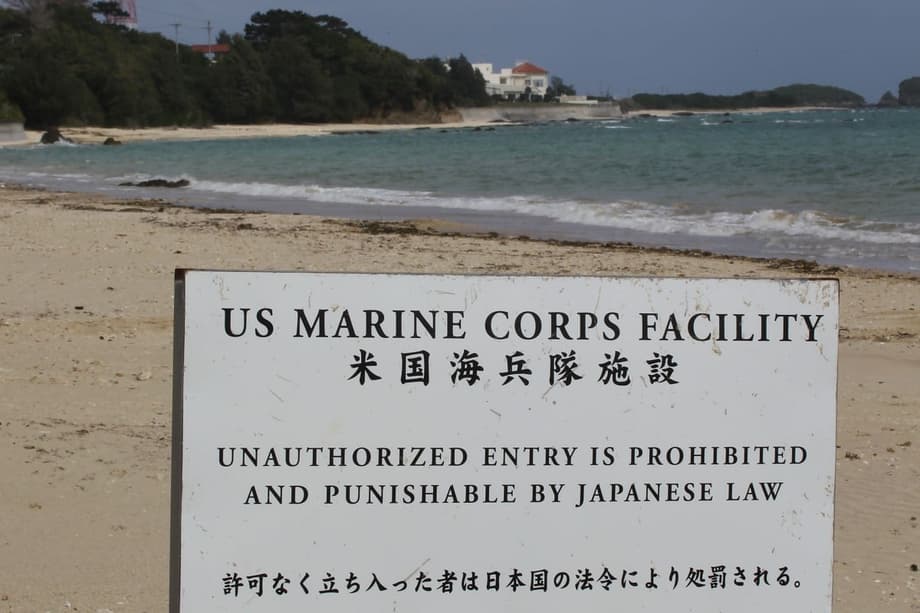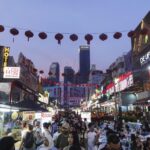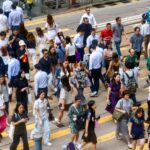What Beijing’s statement means for Okinawa
China used a United Nations human rights forum to urge Japan to stop prejudice and discrimination against Okinawans and other indigenous peoples. The remark, made by Sun Lei, China’s deputy permanent representative to the UN, led to speculation that Beijing was edging toward a challenge to Japan’s control of Okinawa. Chinese analysts and regional scholars read it differently. They say the message targeted the expanding militarisation of the island chain and the heavy concentration of US bases there, not sovereignty. That interpretation tracks with a wider pattern in Chinese diplomacy that tries to frame security concerns through human rights language while avoiding direct claims that could trigger an open crisis with Tokyo.
- What Beijing’s statement means for Okinawa
- Why Okinawa is central to security in East Asia
- Is China challenging Japan’s sovereignty over Okinawa
- Indigenous rights and Okinawan identity at the UN
- What Chinese diplomats said at the Third Committee
- Analysts read the message as a warning on militarisation
- How US and allied forces use Okinawa today
- Risks of miscalculation and what could ease tensions
- What to Know
Okinawa sits at the center of a tense triangle involving China, Japan and the United States. The prefecture hosts dozens of US facilities, including Kadena Air Base, and governs the uninhabited Diaoyu Islands, called the Senkaku Islands in Japan, which are the focus of a long standing dispute between Beijing and Tokyo. Tokyo officially recognizes the Ainu in Hokkaido as an indigenous people. Okinawans, known as Uchinanchu, do not have that recognition, even as UN bodies have urged better protection of their rights. Against that backdrop, China raised Okinawa at a UN committee meeting that deals with human rights.
Why Okinawa is central to security in East Asia
Geography gives Okinawa outsize strategic weight. The islands straddle key sea lanes and sit just 110 kilometers east of Taiwan. In any conflict over Taiwan or a flare up around the Diaoyu or Senkaku Islands, forces moving through the first island chain would pass near Okinawa. The prefecture is home to about 1.4 million people and hosts a large share of the US exclusive use base area in Japan. Roughly 30,000 US service members are stationed there, supported by tens of thousands of family members and civilian staff. Kadena is the largest US air base in the region and a hub for surveillance, refueling and rapid deployment.
Japan has tightened defense coordination with the United States in recent years, adding missile units across the southwest islands and expanding joint exercises. The two governments are moving ahead with the relocation of Marine Corps Air Station Futenma to a new coastal site at Henoko on Okinawa, a plan contested by the prefectural government and many residents. Local leaders argue that the base footprint and flight operations impose noise, safety and environmental costs that other parts of Japan do not carry.
Sovereignty over Okinawa is not under dispute in international law. Japan administers the prefecture and the US Japan Security Treaty governs the stationing of American forces. Tensions sharpen when activity around the Senkaku Islands spikes. Chinese coast guard and maritime militia ships regularly enter waters near the islands and Japanese patrols shadow them. Washington has stated that the treaty covers the Senkaku Islands, which binds the United States to consult with Japan if armed attack occurs against territory under Japan’s administration.
Is China challenging Japan’s sovereignty over Okinawa
Chinese officials have not signaled a formal change on Okinawa’s status. When Beijing and Tokyo normalized relations in 1972, they pledged to respect each other’s sovereignty and territorial integrity. Beijing has never officially questioned Japan’s rule over Okinawa. Analysts in Shanghai and Beijing caution against inflating the meaning of Sun Lei’s UN remarks and see them as calibrated to criticize militarisation and discrimination while leaving sovereignty aside.
Wang Guangtao, deputy director at the Centre for Japanese Studies at Fudan University, said China remains cautious on Okinawa even as it opposes steps by Japan that intersect with red lines on Taiwan.
Okinawa is still under Japan’s claim as a prefecture within its sovereign territory. From the perspective of the Chinese government, if Japan does not cross any red lines on Taiwan issues, China’s stance on the issue would not be too extreme.
Historical sensitivities around Ryukyu references
References to the Ryukyu Kingdom carry emotional weight. In 2023, China’s leader used the term Ryukyu when discussing historical links between the islands and Fujian province. Okinawa’s governor Denny Tamaki responded in a positive tone, seeing room for engagement, while some Japanese media voices worried it hinted at a sovereignty play. Symbols matter in regional politics. Even if policy does not change, language can spark anxieties that take time to unwind.
Indigenous rights and Okinawan identity at the UN
For years, Okinawan activists have brought their case to UN human rights mechanisms. Committees have recommended that Japan recognize Okinawans as indigenous and protect language, culture and land rights. The movement links discrimination and land use to the heavy footprint of US bases, a legacy of postwar American occupation and Tokyo’s postwar policies.
UN guidance on indigenous rights, set out in the UN Declaration on the Rights of Indigenous Peoples adopted in 2007, encourages states to consult communities on land, resources and development. The declaration is not legally binding, yet it sets standards that states are urged to meet. Japan endorsed the declaration and passed a law in 2019 that recognized the Ainu as an indigenous people. Many Okinawans resist the label indigenous for cultural or political reasons, while others embrace it as a tool to seek redress. That mix gives outside messages new sensitivity.
Academic research describes how a new Japanese nationalist countermovement has pushed back against the use of the term indigenous for Okinawans and tried to separate base politics from identity claims. The result is a polarized debate over rights and security that can make day to day life on the islands more tense. Chinese references to indigenous peoples at the UN intersect with this debate and add an external voice that Tokyo is likely to reject on principle.
What Chinese diplomats said at the Third Committee
On October 9, at a general debate of the UN General Assembly’s Third Committee, Sun Lei used his intervention to speak about human rights and to flag concerns about several countries, including Japan. He urged Japan to confront its wartime past, to improve women’s status, and to stop discrimination targeting Okinawans and other indigenous peoples.
As China’s deputy permanent representative, Sun put it this way:
China urged Japan to confront the history of its militaristic aggression against neighbouring Asian countries and colonial rule during World War II, and to genuinely improve the social status of women and end prejudice and discrimination against Okinawans and other indigenous peoples.
Third Committee debates have no binding force. Delegations use them to outline positions, spotlight grievances and try to shape narratives. Beijing has long used UN bodies to press on issues from historical memory to the one China principle, and Tokyo in turn defends its record and stresses alliance responsibilities.
Analysts read the message as a warning on militarisation
Zheng Zhihua, an associate professor at Shanghai Jiao Tong University who studies East Asia maritime policy, argued that Sun’s words were brief and restrained. He sees the thrust as a warning about turning Okinawa into a forward military platform again, and as support for local communities’ rights.
China’s intention is to express that Okinawa should not again become a military fortress but return to being a hub of peace and trade in East Asia, as it once was historically.
He linked the timing to rising US China rivalry and the escalating focus on Taiwan. As the United States steps up activity around Taiwan and Japan upgrades defenses in the southwest islands, the strategic value of Okinawa grows. Chinese leaders watch that trend and highlight the island’s history as a trading hub rather than a barracks.
Wider regional dynamics feed the concern. The United States has increased patrols and exercises across the South China Sea and the East China Sea. Washington accuses China of building and militarising artificial islands and of coercing neighbors, claims Beijing rejects. Japan, South Korea, Australia and other partners have expanded cooperation with the United States. Any message about Okinawa is heard in that larger conversation about how to balance deterrence and stability.
How US and allied forces use Okinawa today
American facilities on Okinawa support air, sea and logistics missions across the Western Pacific. Kadena Air Base hosts fighter jets, surveillance aircraft and tankers. Marine units train and stage on the island. Naval forces use nearby ports. Families of service members live on and off base, which binds the presence to daily life on the islands.
Allied militaries periodically operate in and around Okinawa under arrangements with the United States and Japan. Joint drills with partners, from the United Kingdom to Canada, transit the area. The island chain offers airspace, ranges and runways that make complex exercises possible. Supporters argue that this network helps deter conflict and keeps sea lanes open. Critics in Okinawa focus on risks and burden sharing.
Local protests against base expansion have been steady for decades. The prefecture’s current governor, Denny Tamaki, campaigned on reducing the burden and has opposed the Futenma relocation plan. Japanese courts have largely sided with the central government on construction permissions, and land reclamation work has continued. The dispute reflects a democratic system in which the national government controls defense policy while local leaders try to secure relief for their communities.
Risks of miscalculation and what could ease tensions
Messaging about indigenous rights touches sensitive identity debates in Okinawa and inside Japan. Framing those concerns next to militarisation sharpens the political edge. Misreading intent is a real danger in a region with daily military interactions at sea and in the air.
Several practical steps could lower the temperature. China and Japan have a maritime and aerial communication mechanism that can help prevent accidents. Expanding its use would make encounters around the Senkaku or Diaoyu less risky. Washington and Beijing have restored high level military talks. Keeping the channel open reduces chances of a crisis by mistake. In Okinawa, consistent consultations with local communities on noise, safety and environmental mitigation can reduce friction even if base changes move slowly.
The UN forum Sun addressed is about ideas and pressure, not legal rulings. Still, the words matter. Beijing appears to be using the language of rights to argue against what it sees as excessive militarisation on its doorstep. Tokyo is likely to reject any outside framing that touches its administrative control over Okinawa. The best indicator of intent in the months ahead will be activity around the islands and the pace of alliance planning.
What to Know
- At the UN on October 9, Chinese envoy Sun Lei urged Japan to stop discrimination against Okinawans and other indigenous peoples and to confront wartime aggression and colonial rule.
- Chinese analysts say the remarks target militarisation in Okinawa, not a challenge to Japanese sovereignty over the prefecture.
- Okinawa hosts about 30,000 US service members and dozens of US facilities, with Kadena Air Base the largest US air base in the region.
- Okinawa administers the Senkaku Islands, called Diaoyu in China, a flashpoint where Chinese and Japanese patrols often shadow each other.
- Japan recognizes the Ainu as indigenous, but not Okinawans; UN bodies have recommended stronger protections for Okinawan rights.
- Beijing’s public stance does not question Japan’s rule over Okinawa; analysts link any shift to red lines related to Taiwan.
- Okinawa’s governor opposes the relocation of Futenma to Henoko; construction continues under central government authority.
- US China rivalry and Taiwan tensions increase the strategic weight of Okinawa for both sides of the Pacific.
- China and Japan have a communication mechanism to manage encounters at sea and in the air; consistent use can reduce risk.




